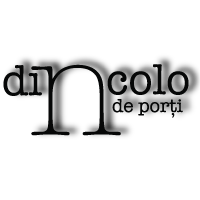Maria Rădan-Papasima
Afumarea este o metodă eficientă și relativ simplă de a conserva cașul, practicată în multe dintre gospodăriile din zona Bran-Moieciu. După mulsul vacii, primul pas în prepararea cașului este încălzirea laptelui, la o temperatură potrivită, apropiată de cea a corpului, cu atenție, pentru că un lapte încălzit prea tare, dă o brânză amară. Pentru un kilogram de caș afumat este nevoie cam de 10 litri de lapte de vacă, la care se adaugă o linguriță de cheag natural din rânză (stomac) de vițel, are conține bacteriile esențiale pentru transformarea care va avea loc. După aproximativ o oră, laptele este închegat și poate fi strâns și scurs printr-un tifon, partea solidă care rămâne fiind frământată, presată pentru a elimina tot zerul, și pusă într-o formă, la dospit. Odată ce a fost eliminat tot zerul și cașul este cât mai uscat, se poate pune la afumat. În funcție de cantitatea de caș pe care o produc și de sistemul de afumat pe care îl folosesc, localnicii pot avea această activitate zilnic, sau o dată la câteva zile, când strâng suficient de multe roți de caș pentru a porni afumătoarea. Există afumătoare cu capacitate mai mare, sub forma unei mici barăci din lemn, unde pot fi puse mai multe bucăți de caș, precum și cârnați, slănină sau pastramă. O variantă mai simplă este însă afumarea în aer liber, pentru care nu este necesar decât un cazan așezat peste un capac – pentru a nu fi în contact direct cu pământul, și două bucăți de lemn plasate transversal peste deschiderea sa, ce servesc drept suport pentru caș. Focul se face în interiorul cazanului iar cașul așezat deasupra preia tot fumul, fiind gata în doar 15-20 de minute.
De la Maria Pepene (Pepenica) din Moieciu de Sus, aflăm că secretul unui caș bine afumat stă în tipul lemnului folosit, care trebuie să fie neapărat de fag, și nu oricum, ci sub formă de buturugă putredă:
Dacă pui mesteacăn sau altceva, mai ales mesteacăn, mesteacănul e amar. Și atât îți trebuie că nu mai poți să-l mai mănânci. Da, numai cu lemn de fag. Și dacă găsești butură, cum s-a tăiat fagul și butura aia a putrezit și se ia, butură din aia, așa roșiatică – păi iese nemaipomenit iese.
Maria Pepene cunoaște bine pădurile din împrejurimi și locurile în care se pot găsi astfel de buturugi de fag, pe care le recunoaște după consistență și miros:
Bradul e mălăios, dar fagul este tare, trebuie să ai topor să-l tai. Și îți vine mirosul cum ai pus, îți vine mirosul de fag. Cu toporul și tăiem și bag în sac, am toată iarna.
Un sac îi ajunge Mariei Pepene cam pentru 40 de cași. Ea nu pornește afumătoarea pentru un singur caș, ci așteaptă să strângă vreo 4 roți, deci un sac de lemn de fag este suficient pentru 10 “afumări”. Pe lângă grijă în alegerea lemnului, afumarea este un proces care necesită și o supraveghere atentă și multă atenție la detalii. Un foc prea puternic, care arde cu flacără în loc să fie înnăbușit, va arde cașul și-l va strica. Din acest punct de vedere, o afumătoare în aer liber este mai ușor de supravegheat. Maria Pepene preferă această variantă, pe care o consideră mai sigură, și povestește de gospodării unde a luat foc afumătoarea și … a rămas destui fără carne și slănină. A pus la afumătoare și a dat flacăra jos și a picat untură de la aia și luat foc și s-a ars.
Un alt aspect important care trebuie urmărit în afumarea cașului este culoarea fumului, care nu trebuie să fie albicios, ci mai degrabă albăstrui: și trebuie să ai să nu iasă fum alburiu. Așa fum curat, e albăstros așa din lemn de fag.
Maria Pepene a învățat să afume cașul încă din copilărie, îndeletnicirea făcând parte la acea vreme din “bagajul” de cunoștințe esențiale pentru orice locuitor al Moieciului..
Cum am învățat? Păi dacă făcea și mama, făcea și tata, făcea și fratele. Ca copil te punea la treabă atuncea: hai, învață-te! Te măriți mâine-poimâine și te pune soacră-ta să faci caș și nu știi să faci.
Dincolo de conformarea cu normele sociale dintr-o anumită vreme, îndeletnicirea însușită a reprezentat și un sprijin economic constant pentru gospodăria Mariei Pepene. În perioada dinainte de 1989, când funcționau încă uzinele de la Zărnești și Brașov, alături de alte femei din zonă, ea vindea caș afumat muncitorilor la ieșirea din fabrică. Maria Pepene își amintește cu mândrie cum cașul ei era foarte apreciat și cum reușea foarte repede să-și vândă toată marfa. În prezent, “cașul de la Pepenica” este foarte căutat de turiștii care ajung în Moieciu, iar în timpul sezonului, aproape că nu trece zi fără să aibă un cumpărător.
Radu Frunteș, custodele muzeului etnografic din Șirnea[1], povestește cum pe vremea când exista granița dintre Țara Românească și Ardeal, cașul afumat era “moneda de transhumanță” pe care ciobanii o ofereau vameșilor pentru a trece cu turmele dintr-o parte în alta. Azi, lucrurile par așezate într-o nouă ordine, și turiștii sunt cei care nu pot trece prin zona Branului fără a lua cu ei la plecare măcar o roată de caș afumat.
[1] Muzeu etnografic, olimpic și de artă contemporană “Nicolae Frunteș” Șirnea







